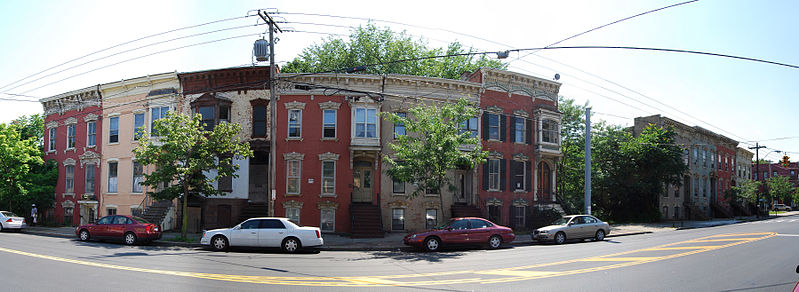In previous posts, we’ve discussed some of the problems posed by vacant properties and the challenges of redeveloping distressed neighborhoods. However, municipal governments are increasingly improving their data and using a wide range of strategies and tools to better manage these problems. In this post, we examine some of the efforts to manage vacant properties and redevelop blighted neighborhoods.
What do communities need to become more resilient to economic, market, and demographic changes? Virginia Tech’s Vacant Property Research Network (VPRN) listed the following components of a resilient system for stabilizing neighborhoods and reclaiming vacant properties:
- Collaborative partnerships among policymakers, practitioners, nonprofits, and business leaders
- Information systems to identify patterns and facilitate data-driven policies and interventions
- A strategic vacant property policy framework supported by appropriate regulations
A review of the relevant academic and professional literature shows those same three components discussed repeatedly. Note that these components are all interdependent, and most communities will need to make incremental, adaptive changes in each of these areas to develop an effective system suitable for their specific context, needs, and goals. Best practices can be discerned, but there is no one-size-fits-all solution.

252–70 Clinton Avenue, Albany, NY – Rowhouses in a historic neighborhood that has undergone stabilization, courtesy of Matt H. Wade, CC BY-SA 3.0.
We’ve written before about how data analysis can guide land use and urban planning, but the analysis only works with data of sufficient quantity and quality. One method many jurisdictions have used to facilitate tracking potentially problematic properties is passing ordinances that require property owners to register their vacant properties. Safeguard Properties, a mortgage field services company that tracks these vacant property registration (VPR) programs (also sometimes referred to as vacant building registration or VBR programs) noted over 240 such local ordinances as of September 2009, but is now tracking more than more than 1,000 of these programs. To make it easier to hold registrants accountable for the maintenance of their properties, VPR ordinances typically require that registrants provide complete contact information.
In addition to providing data for code enforcement and urban planning, VPR programs typically assess fees at least annually. Progressive fees that escalate based on the duration of the vacancy or the existence of any code violations can provide owners an incentive to return vacant properties to productive use. In contrast, some municipalities allow waivers or refunds of the registration or renewal fees to encourage well-intentioned owners to try to sell or renovate their properties. Others municipalities prioritize compliance over incentives by implementing lower fees combined with steep fines for non-compliance. Any revenue obtained from these fees helps offset the costs associated with vacant properties.[1]
While becoming increasingly common, VPR programs aren’t the only method being used to gather data. Some communities are using databases that compile data from other existing sources. One example is the Northeast Ohio Community and Neighborhood Data for Organizing, or NEO CANDO, a publicly accessible regional information system developed by Case Western Reserve University’s Center on Urban Poverty and Community Development that allows users free access to data tables, maps, and charts for the entire Northeast Ohio region or for specific neighborhoods within the region. NEO CANDO compiles data from the U.S. Census Bureau, mortgage loan data from the Federal Financial Institutions Examination Council, and data from various city and county departments, among other sources. The advantage of this type of database over a database created from a VPR program alone is that compilation databases contain a wider variety of data that may be more helpful in developing a more comprehensive and proactive vacant property plan. Of course, data from a VPR program can always be included in a compilation database.
In response to the foreclosure crisis, Congress established the Neighborhood Stabilization Program (NSP) in July 2008 to help communities address the effects of vacant properties in their neighborhoods. The NSP was created to assist local efforts to purchase, rehabilitate or demolish, and redevelop vacant properties. The NSP also established the National Community Stabilization Trust to provide technical assistance to local affordable housing providers. A total of almost $7 billion was allocated to the program, but no continuing appropriations exist for the NSP.
As of December 2013, the NSP had affected nearly 65,000 unique housing units around the United States. The Reinvestment Fund conducted an evaluation that compared nationwide NSP investment clusters (NICs)—areas in which NSP investment was concentrated—with three comparable markets without clusters of NSP investments. The study found that in terms of changing vacancy rates, 74% of all NICs trended better than at least one of their comparable markets between the first half of 2008 and the first half of 2012; 27% beat every comparable market against which they were studied.[2]
While the NSP’s accomplishments with specific housing units are modest, what is probably more important are the lessons learned and the relationships built between public agencies, land banks and community development corporations (CDCs),[3] local real estate and development professionals, housing advocates, and other neighborhood groups and organizations. Many public-private partnerships (PPPs or P3s) were formed to implement NSP investments. A PPP is a contractual relationship between the public and private sectors to provide a project or service, and PPPs have been gaining popularity as a tool to capitalize on the strengths of both sectors.
Some of the best practices identified have included building strong partnerships and striving for consensus among all essential stakeholders, creating regulatory flexibility and removing regulatory barriers wherever possible, and providing property owners and developers with financial or other incentives. For example, streamlining and expediting permit processes can be a powerful incentive.
[1] For more on VPR ordinances, see Benton C. Martin. 2010. “Vacant Property Registration Ordinances.” Real Estate Law Journal 39(1):6–43. Available at https://papers.ssrn.com/sol3/papers.cfm?abstract_id=1992748.
[2] The Reinvestment Fund. 2014. “Summary of Nationwide NSP Investment Cluster (NIC) Performance and Analysis Methodology.” Accessed April 7, 2015 at https://www.hudexchange.info/resources/documents/NICReportsNationwideSummary.pdf.
[3] Land banks are typically public or community-owned entities focused on the strategic acquisition and management of vacant properties for conversion to productive use. To accomplish this task efficiently, land banks are granted special powers and legal authority pursuant to the state statutes that enable them.
CDCs are nonprofit, community-based organizations that provide neighborhoods with a wide array of housing and community services. In some cases, CDCs can purchase vacant properties or take on the responsibility of property management.






Recent Comments